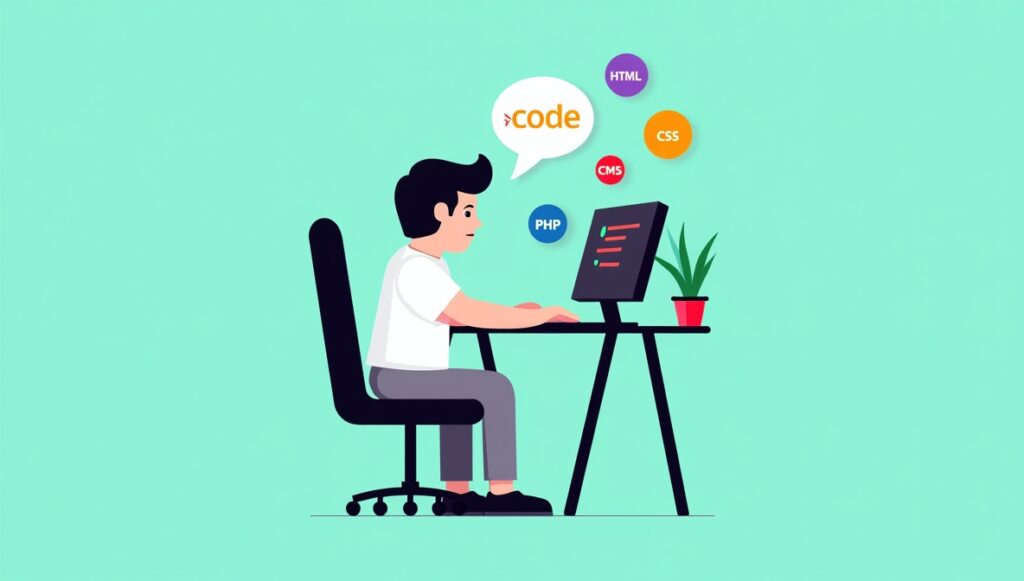Building Websites with Python: A Real Developer’s Unfiltered Guide
Let me tell you how I really learned Python web development – through a series of spectacular failures. My first attempt at a Django project in 2015 crashed spectacularly when I realized I’d forgotten to set up database migrations. The Flask app I built for my brother’s bakery? It worked great until five users tried to order croissants at the same time. And don’t even get me started on the time I accidentally took down a client’s production server during a “simple” update.
After eight years and countless mistakes, I’ve finally figured out this Python web development thing. And I’m going to share everything with you – the good, the bad, and the “why won’t this @#$%ing deploy?” moments.
Python for Web Dev: What Nobody Tells Beginners
Here’s the raw truth most tutorials won’t give you:
Python’s Sweet Spots
- Data-heavy backends (I built an analytics dashboard that processes millions of records daily)
- Rapid prototyping (I can spin up a working API faster than most devs can make coffee)
- Admin interfaces (Django’s admin panel saved me 200+ hours on a client project last year)
Where Python Makes You Want to Scream
- Real-time anything (Try building a chat app without reaching for Node.js)
- Frontend magic (That slick animation? Still requires JavaScript)
- Performance-critical systems (Though it’s gotten much better)
Just last month, I had to rewrite a Python endpoint in Go because it couldn’t handle the load. Python’s great until suddenly it isn’t.
Choosing Your Python Web Framework: A Veteran’s Take
I’ve built production apps in all the major frameworks. Here’s my unfiltered opinion:
Django: The Overbearing Genius
Perfect for: Projects that need structure yesterday
Will drive you crazy when: You need to do something unconventional
What I love:
- The admin panel is pure gold (saved me from building countless CRUD interfaces)
- Batteries-included means less time picking libraries
- Surprisingly flexible if you learn its secrets
What makes me curse:
- The ORM can be painfully slow if you don’t understand it
- Magic happens everywhere (great until you need to debug it)
- That one time migrations completely broke production
Pro tip: Use select_related() and prefetch_related() religiously or suffer N+1 query problems.
Flask: The “Simple” Trap
Great for: Learning the basics
Dangerous because: Freedom leads to spaghetti code
Why I still use it:
- Perfect for small APIs and microservices
- Lets me understand what’s actually happening
- No magic means no surprise behaviors
Why I regret some Flask projects:
- That “simple” app now has 87 routes in one file
- Authentication grew more complex than expected
- Wish I’d used Blueprints from day one

FastAPI: The New Hotness
Amazing for: Modern APIs
Frustrating when: You’re new to async
Best features:
- Automatic docs make frontend devs love you
- Performance is legitimately impressive
- Python type hints prevent whole classes of bugs
Gotchas:
- Async has a learning curve
- Some Django/Flask patterns don’t translate
- Smaller ecosystem (but growing fast)
Real Python Web Projects: Behind the Scenes
Let me show you three real projects with their dirty secrets:
1. Medical Research Portal (Django)
- What worked: Handled complex permissions beautifully
- Nightmare: Customizing the admin panel took weeks
- Lesson learned: Never override
save()without proper transaction handling
2. Restaurant POS System (Flask)
- Win: Was up and running in two weeks
- Pain point: Wish I’d known about Flask-Admin sooner
- Fun fact: Still running the same codebase 5 years later
3. University Scheduling API (FastAPI)
- Success: Handles registration rush like a champ
- Struggle: Database connection pooling was tricky
- Aha moment: Pydantic models saved hundreds of validation bugs
The Ugly Truth About Python Web Development
Here’s what you won’t learn until it’s 3 AM and your deployment is failing:
1. Deployment is a Beast
- WSGI vs ASGI will confuse you at first
- Environment management is crucial
- That “simple” Dockerfile will have 20 revisions
War story: I once spent 14 hours debugging a deployment only to find a single missing comma in a config file.

2. Performance Traps Everywhere
- That innocent-looking ORM query? Table scan.
- Synchronous code blocking everything? Happens.
- Memory leaks from unclosed resources? Yep.
Diagnostic tools that saved me:
- Django Debug Toolbar
- Scout APM
- Good old-fashioned logging
3. JavaScript is Inevitable
No matter how much you love Python:
- That interactive component needs JS
- Modern frontend expects API endpoints
- You’ll eventually need to understand fetch()
Python vs the World: My Honest Take
Having built production systems in multiple languages:
| Task | Python | Node.js | Ruby | Go |
|---|---|---|---|---|
| API Development | Excellent | Excellent | Good | Excellent |
| Real-time | Poor | Excellent | Okay | Good |
| Developer Joy | High | Medium | High | Low |
| Learning Curve | Moderate | Moderate | Moderate | Steep |
| Data Tasks | Best | Good | Okay | Poor |
Surprising insight: Python’s greatest strength isn’t raw performance – it’s how quickly you can turn ideas into working code.
Getting Started: A No-Nonsense Roadmap
If I could restart my Python web journey, here’s exactly how I’d do it:
Month 1: Foundations
- Build a Flask app that:
- Takes form input
- Stores it in SQLite
- Displays the results
- Add user authentication
- Deploy to PythonAnywhere
Month 2: Level Up
- Rewrite it in Django
- Add Celery for background tasks
- Implement proper error handling
Month 3: Real World Skills
- Learn basic Docker
- Set up CI/CD
- Add monitoring
Ongoing:
- Contribute to open source
- Build portfolio projects
- Never stop learning
Career Paths You Might Not Expect
Python web skills can take you places you might not consider:
1. Developer Advocate
- Teach others what you’ve learned
- Combine coding with communication
- Salary range: $120k-$180k
2. API Product Manager
- Design web services
- Bridge technical and business
- Salary range: $130k-$200k
3. DevRel Engineer
- Create sample apps and demos
- Work with cutting-edge tech
- Salary range: $140k-$220k
Essential Tools I Can’t Live Without
After years of trial and error:
Development
- PyCharm Professional (worth every penny)
- Black (no more formatting debates)
- pre-commit hooks (catch mistakes early)
Testing
- pytest (with fixtures)
- Factory Boy (for test data)
- Playwright (for browser tests)
Operations
- Docker Compose (for local dev)
- Sentry (error tracking)
- Grafana (monitoring dashboards)
Mistakes I’ve Made So You Don’t Have To
Learn from my scars:
- Not using migrations properly
That time I had to manually recreate a production database still haunts me. - Ignoring indexes
Learned the hard way when a query took 28 seconds to run. - Mixing business logic with views
The 2,000-line view file was impossible to maintain. - Skipping tests early
The technical debt nearly sank a project. - Underestimating frontend work
That “simple” JavaScript interaction took three weeks.

The Future Looks Bright
Where Python web dev is heading:
- Async becoming mainstream
FastAPI is just the beginning. - Tighter data science integration
ML-powered web apps will be everywhere. - Simpler deployments
Platforms are finally making this easier. - Continued JavaScript coexistence
The hybrid approach isn’t going away.
Final Advice Before You Dive In
Three hard-won lessons:
- Build ugly first
Your perfect architecture can wait. - Embrace the struggle
Every error makes you better. - Share your journey
Blog about your wins and fails.
That broken Django app from 2015? It taught me more than any successful project. The Python web ecosystem keeps getting better, and there’s never been a better time to start.
Now go build something terrible – I promise it’ll be worth it.












This is a great experience in digital world
Nicer